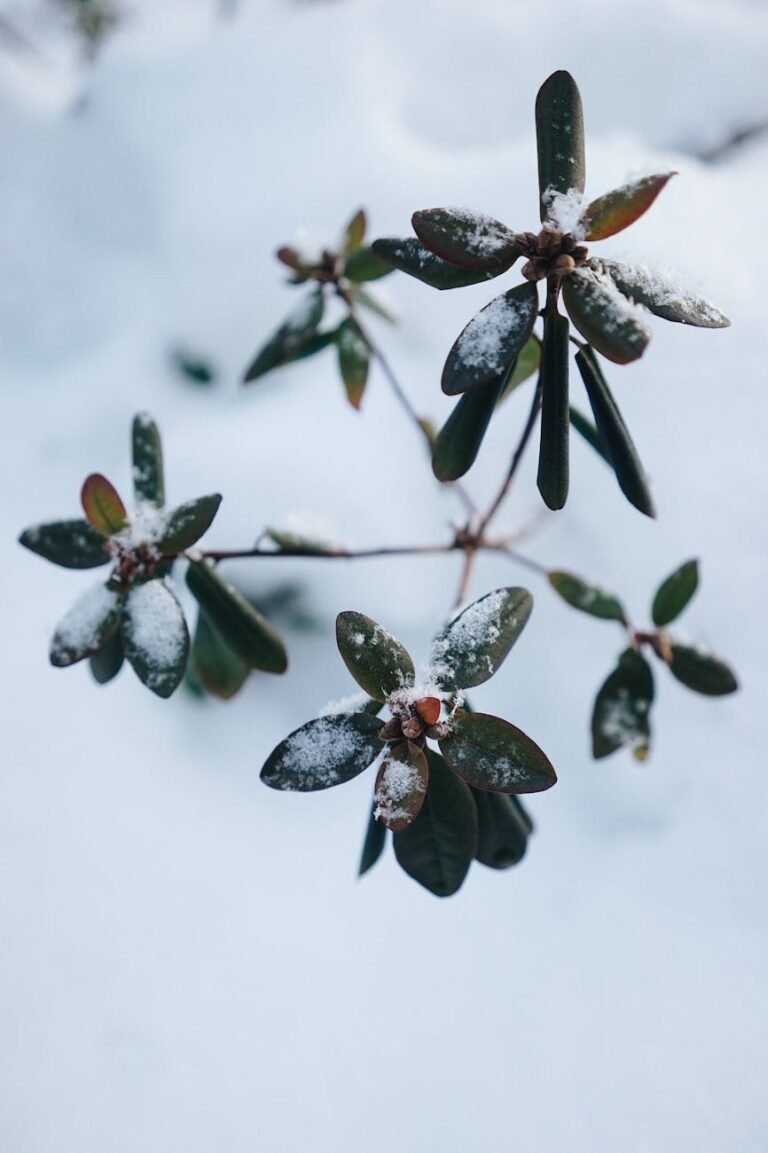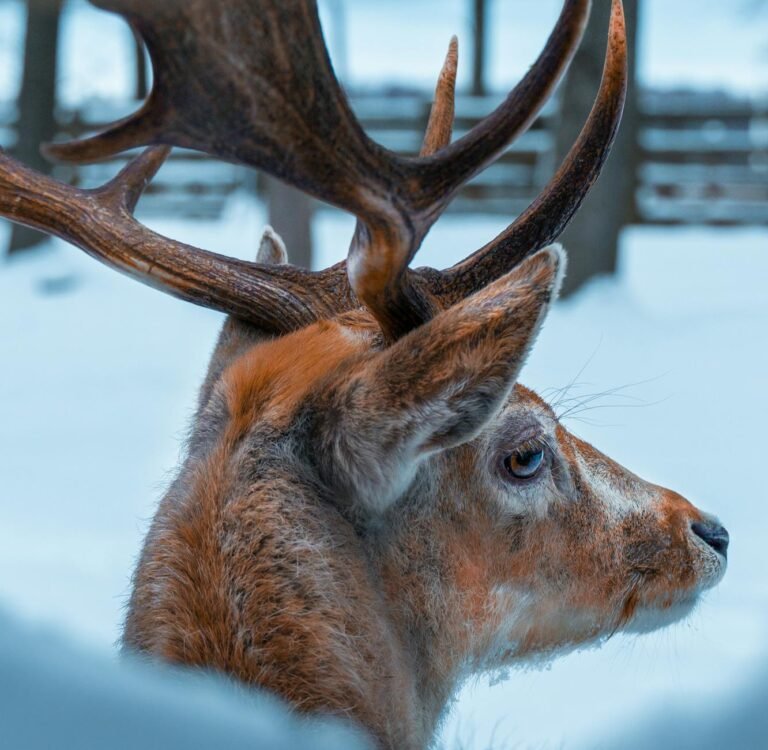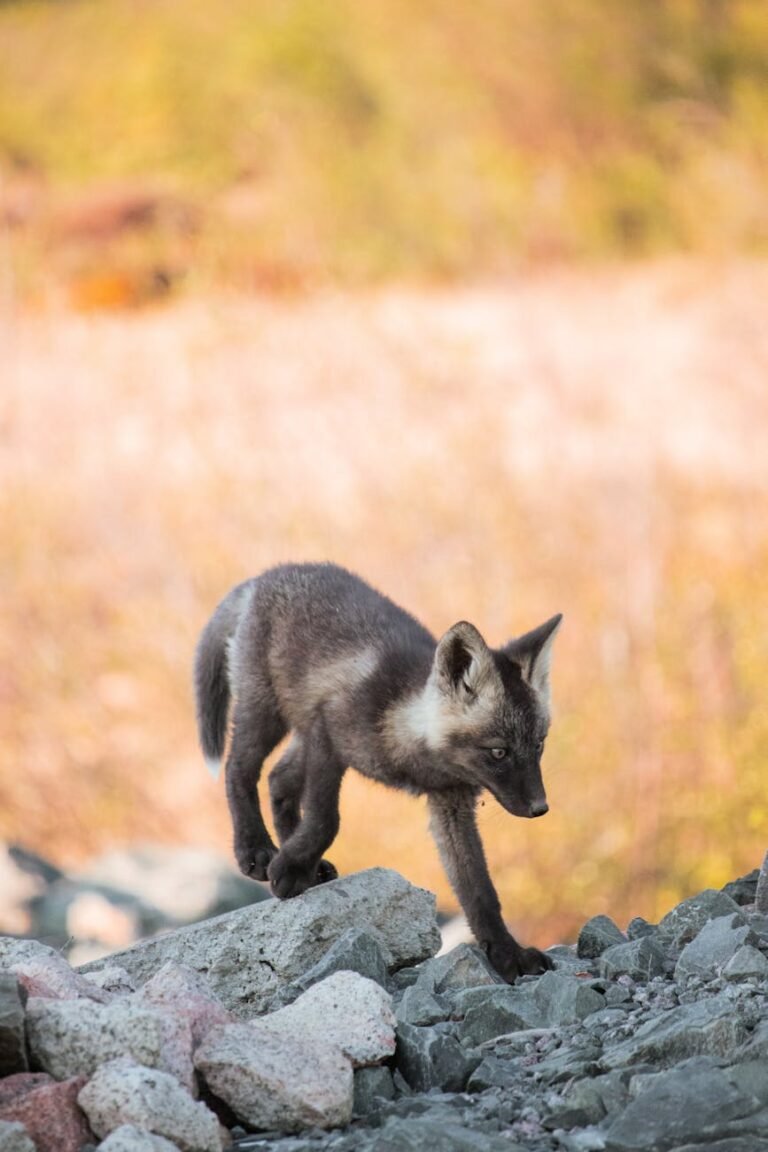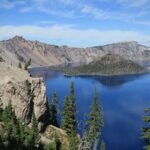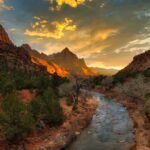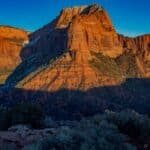Gates of the Arctic National Park Facts
Get ready to dive headfirst into the untouched wonderland of Gates of the Arctic National Park! This gem is all about breathtaking landscapes and critters that’ll make any nature buff’s heart skip a beat. It’s got everything you crave for a nature escapade.
Location and Biome
So, where’s this magical place? Smack dab in the wild terrains of Alaska in the good ol’ USA (iNaturalist). Perched entirely above the Arctic Circle, it’s not your everyday park. Imagine rugged mountains, endless boreal forests, and vast tundra—a true slice of heaven far outside the usual hustle and bustle, with no pesky roads or trails messing with the vibe.
Psst! If you’re thinking about checking it out, remember, it’s not your typical Sunday drive park—it’s more of a fly or hike-in kind of deal. Better have that gates of the arctic national park map handy, so you don’t end up like Dory.
Wildlife Diversity
Stepping into Gates of the Arctic is like plunging into a wildlife documentary. This place is packed with an amazing array of animals hanging out in their natural habitats. It’s where mammals, birds, and even some quirky amphibians kick it in style, perfectly in sync with the Arctic’s tough love.
You’ll probably spot:
| Species | What They’re All About |
|---|---|
| Caribou | They’re trekkers, moving in huge herds |
| Bears | Both black and grizzly make appearances |
| Dall Sheep | Masters of the mountain life |
| Lynx | The mysterious, shy fellas |
| Beavers | Architectural geniuses of the animal world |
| Arctic Terns | Champion long-distance fliers |
| Muskox | Rockin’ thick coats to brave the cold |
| Wood Frogs | The flash-freezing frogs who thaw out in spring |
(Source: National Park Service)
And here’s something jaw-dropping: those arctic terns—yes, the tiny feathered jet-setters—make an epic journey from the Antarctic to breed in the park’s Central Brooks Range (National Park Service).
For the deets on more creatures you might encounter, our arctic national park wildlife guide has got the scoop.
Heads up, though—the weather isn’t always friendly. Check out the gates of the arctic national park weather info for pro tips on when to go wild in the wild. Whether you’re there for the birds, the beasts, or just a touch of peace and quiet, this park’s got a little magic for everyone.
Need some insider tips or a playbook for spotting those sneaky creatures during your visit? Peek at our arctic national park travel guide and go prepared!
The Central Brooks Range
Summer Abundance
Nestled in the Gates of the Arctic National Park, the Central Brooks Range bursts to life in the summertime. It’s a season that draws critters and creatures out of the woodwork (literally!), perfect for wildlife watchers and outdoor lovers lookin’ to get in on the action.
With the sun up high, there’s plenty to munch on. From the tiniest buggers to juicy prey, the chow-down attracts a wild crowd. We’re talking birds like the superstar arctic terns, famous for hauling their feathered butts from Antarctic chill to breed in these parts (National Park Service). Meanwhile, caribou are on the move with bears and wolves snooping around. Toss in some little guys and fish hanging out in rivers and lakes, and you’ve got one lively scene.
If you’re itching to see it all in person, peek at our tour options at Gates of the Arctic National Park and dive into the wild!
Winter Survival Strategies
While summer’s a wild party, come winter, things flip a switch. The Central Brooks Range turns into an icebox, with temps dipping from nada to a teeth-chattering -50ºF (NPS.gov). But the critters here? They’ve got tricks up their furry sleeves.
Here’s how they tough it out:
- Hibernation: Bears kick it in snooze mode, slowing everything down to keep cozy without the need for a midnight snack.
- Migration: Those arctic terns flip the bird to the cold, heading back to Antarctic once their summer gig wraps up.
- Insulation: Little fuzzballs like lemmings and voles burrow deep, wrapping themselves up in nature’s blankets to keep from freezing.
- Adapted Physiology: Caribou and their big-bodied buddies bulk up with fur and flubber to ride out the frozen months.
| Wildlife | Winter Strategy |
|---|---|
| Bears | Hibernation |
| Arctic Terns | Migration |
| Lemmings | Insulated Burrows |
| Caribou | Thick Fur, Fat Storage |
If you’re thinking about a chilly visit, you better come ready for the cold. Check out our safety tips and visitor guidelines so you’re geared up for an unforgettable adventure in Gates of the Arctic National Park. Want the lowdown on weather shenanigans? Swing by our seasonal considerations page for the scoop.
Cape Krusenstern National Monument
Historical Significance
Welcome to Cape Krusenstern National Monument, a treasure chest of history in the wilderness of Alaska. This incredible place was made a national monument on December 1, 1978, and covers an impressive 649,096 acres. It’s not just the stunning views that draw people in—it’s also a peek into human history. Along the 114 side-by-side beach ridges near the Krusenstern Lagoon, you’ll discover archaeological sites that go back around 5,000 years, with some spots possibly dating back a whopping 9,000 years!
Geology and Landscape
Time seems to stand still in the bedrock of Cape Krusenstern, where ancient sedimentary rock from way back during the Ordovician to Pennsylvanian periods lies beneath your feet. Add in a dash of younger Cenozoic deposits like those Pleistocene terrace layers, and you’ve got a geological party going on!
This majestic place isn’t just about old rocks, though. It’s got barrier islands, peaceful lagoons, wetlands, coastal plains, and sandy beaches. These unique spots offer a home to all sorts of creatures, from fish to marine mammals, and even those migratory birds stopping by for a rest.
| Feature | Description |
|---|---|
| Total Area | 649,096 acres (262,679 hectares) |
| Geology | Composed of sedimentary formations (Ordovician to Pennsylvanian), Pleistocene terraces, etc. |
| Key Habitats | Barrier islands, lagoons, wetlands, coastal plains, and beaches |
| Historical Timeline | Archaeological sites date back 5,000 to 9,000 years ago |
Thinking about a visit? We’ve got everything you need to plan your adventure. Check out our guides on the intriguing Gates of the Arctic National Park for maps and weather forecasts. Curious about things to do? We’ve got activity lists and tour options ready for you.
Get ready, set, and go! Dive into the rich history and natural beauty Cape Krusenstern offers—you won’t regret a minute.
Visitor Guidelines and Safety
When you set foot in Gates of the Arctic National Park, it’s not like stepping into your average park—things get a bit wild and woolly here. Way up north, you’re in for the ultimate Alaskan adventure, so being ready for the unexpected is your best hiking buddy. Here are some crucial pointers to keep your trip both safe and fun.
Weather Preps
In Gates of the Arctic, Mother Nature doesn’t send out memos. Temps swing like a pendulum, so your travel plans might dance along weather’s whimsy.
| Season | Temperature Range (ºF) | Chill Activities |
|---|---|---|
| Winter | 0 to -50 | Chasing auroras, snowshoeing |
| Spring | 0 to 40 | Trails and tails (wildlife watching) |
| Summer | 40 to 75 | Backpack adventures, river rides |
| Fall | 0 to 40 | Photography strolls, leaf peeping |
Winter’s bite can be beastly, with numbers plunging between 0 to -50ºF. The snow loves to stick around for 8 or 9 months, making those chilly times the perfect set for Aurora Borealis shows. You better pack your cold-battling armor: think snuggly layers, boots that’ll laugh off the cold, and keep thermals handy. For a deeper dive on the climate, meander over to our park weather page.
Keep the Chatter Alive: Communication and Gear
Way out yonder in the park, your trusty cell might as well be a brick. No bars here! So, you’ve gotta be the Swiss Army knife of self-reliance.
Communication Buddies:
- Satellite Phones: These babies are your go-to for talk-time. Unlike other gadgets, they chat via satellites, dodging towers and giving you reliable service.
- GPS Gizmos: Getting lost isn’t part of the plan. Pop a GPS device in your pack to steer clear of mishaps since they don’t rely on cell towers.
Fetch a full rundown of what ‘stuff’ to bring in our Travel Guide.
Must-Have Gear:
- First Aid Kit: Your kit’s gotta be packed and ready for boo-boos and whatever else till pros arrive.
- Food Stash: Bring munchies galore, plus a little extra for ‘just in case.’
- Water Purifiers: No need to play ‘guess the parasite’—purification tabs or filters will keep your water woes away.
- Shelter: Opt for a tent or an emergency cover that can hold its ground against the elements.
Show up geared and good to go, and your Gates of the Arctic saga will be all thrill, no risk. For further hacks on getting the most from your trip, scoot over to our visit guide.
Park Overview and Statistics
Establishment and Size
Welcome to Gates of the Arctic National Park and Preserve, a true wild heart of America, untouched by roads and teeming with raw nature’s bounty. This spot was declared a national treasure on December 2, 1980, thanks to the Alaska National Interest Lands Conservation Act (NPS). Holding the silver medal as the second biggest park in the U.S., this place sprawls across a mind-boggling 8.4 million acres.
| Attribute | Information |
|---|---|
| Establishment Date | December 2, 1980 |
| Total Area | 8,472,506 acres (13,238 sq mi; 34,287 km²) |
| Initial Designation | National Monument (1978) |
Curious for a closer look? Take a digital wander through our Gates of the Arctic National Park map.
Unique Features
If there’s one thing this park doesn’t skimp on, it’s jaw-dropping sights. Nestled entirely above the Arctic Circle, it reigns as the northernmost national park in the good ol’ USA (Wikipedia). Here, your bucket list gets one heck of an upgrade with:
- Arrigetch Peaks: Jagged granite towers daring adventurers to reach their summits.
- Mount Igikpak: The king of these peaks, showing off panoramic views that’ll steal your breath.
- Wild and Scenic Rivers: Perfect spots for those seeking a splash of excitement with canoeing and rafting.
But, with great beauty comes great challenges. The park battles issues like retreating snowfields and thawing permafrost from rising temps. It’s crucial to be ready for whatever Mother Nature throws your way (Wikipedia). Equip yourself with tips from our Arctic National Park travel guide and visiting Gates of the Arctic National Park.
The Subarctic climate here means winters that last way too long and summers gone in the blink of an eye – both seasons bring their own flavor of adventure (NPS.gov). Check out how to stay safe and sound with our weather conditions and preparation tips.
Seasonal Considerations
Want to make your trip to Gates of the Arctic National Park unforgettable? Get cozy with this cheat sheet on Mother Nature’s mood swings and plan the best time for your outdoor shenanigans.
Weather Patterns
When it comes to weather here, expect the unexpected. The temperatures can dip faster than a rollercoaster, so prep up if you’re looking to avoid turning into a human popsicle.
- Winter Cuddles (or Chills): Brace yourself for 0 to -50ºF — talk about the ultimate freeze-fest! (NPS.gov)
- Frosty Surprises: Snow loves to play peek-a-boo any month; major flakes return to mountain tops by late August (NPS.gov)
- Epic Rain Plans: Quick rainstorms can turn your river crossings into adventure stories gone wrong (gates of the arctic national park weather)
| Season | Temp Range (ºF) | What’s Up with the Weather |
|---|---|---|
| Winter (Dec – Feb) | 0 to -50 | Snowy, frosty, chilly |
| Spring (Mar – May) | 5 to 30 | Rivers wake up, keep an eye on the sky |
| Summer (Jun – Aug) | 30 to 60 | Warmer with a chance of showers |
| Fall (Sep – Nov) | 10 to 40 | Blink and you’ll miss it—hello, cold! |
Best Times for Activities
Depending on your adventure style, here’s when to get your gear and get going at Gates of the Arctic.
Winter Wanderings (February – April): Love the winter wonderland vibe? Perfect for backcountry exploring, skiing, and snowshoeing. Don’t forget your furry pals can join the hike too. But remember, it’s cold enough to freeze your beard!
Melting Rivers and Mayhem (May): Rivers begin the big thaw, turning May into a washout for float trips. Revamp those plans unless you fancy a floating mishap.
Summer Playtime (Mid-June – September): Backpacking and hiking are the stars of this season. Float trips go with the easy flow by mid-June, and July through August is when the water dance peaks.
Fall Frenzy (Mid-August): Call it short and sweet, but freezing starts early. By mid-September the rivers turn solid, bringing a new twist to adventures and tricky ice crossings.
Have a peek at our arctic national park travel guide for all the nitty-gritty details that’ll make your visit a breeze.
| Activity | Best Time to Shine | FYI |
|---|---|---|
| Skiing, Snowshoeing | Feb – Apr | Gear up—it’s colder than your ex’s heart |
| Float Trips | Jul – Aug | River’s friendly, take the splash route |
| Hiking, Backpacking | Mid-Jun – Sep | Bring a raincoat, just in case |
| Fall Frolics | Mid-August | Early freeze, brace for icy antics |
Pumped to explore more? Check out our guide on visiting gates of the arctic national park for all the pointers you need.


